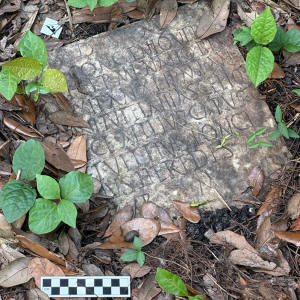A long-lost ancient Roman artifact reappears in a New Orleans backyard
[October 11, 2025]
By JACK BROOK
NEW ORLEANS (AP) — A New Orleans family cleaning up their overgrown
backyard made an extremely unusual find: Under the weeds was a
mysterious marble tablet with Latin characters that included the phrase
“spirits of the dead."
“The fact that it was in Latin that really just gave us pause, right?”
said Daniella Santoro, a Tulane University anthropologist. “I mean, you
see something like that and you say, ‘Okay, this is not an ordinary
thing.’”
Intrigued and slightly alarmed, Santoro reached out to her classical
archaeologist colleague Susann Lusnia, who quickly realized that the
slab was the 1,900-year-old grave marker of a Roman sailor named Sextus
Congenius Verus.
“When I first saw the image that Daniella sent me, it really did send a
shiver up my spine because I was just floored,” Lusnia said.
Further sleuthing by Lusnia revealed the tablet had been missing from an
Italian museum for decades.
Sextus Congenius Verus had died at age 42, of unknown causes, after
serving for more than two decades in the imperial navy on a ship named
for the Roman god of medicine, Asclepius. The gravestone calls the
sailor “well deserving" and was commissioned by two people described as
his “heirs," who were likely shipmates since Roman military could not be
married at the time, Lusnia said.

The tablet had been in an ancient cemetery of around 20 graves of
military personnel, found in the 1860s in Civitavecchia, a seaside in
northwest Italy about 30 miles (48 kilometers) from Rome. Its text had
been recorded in 1910 and included in a catalog of Latin inscriptions,
which noted the tablet’s whereabouts were unknown.
The tablet was later documented at the National Archeological Museum in
Civitavecchia prior to World War II. But the museum had been “pretty
much destroyed” during Allied bombing and took several decades to
rebuild, Lusnia said. Museum staff confirmed to Lusnia the tablet had
been missing for decades. Its recorded measurements — 1 square foot
(0.09 square meters) and 1 inch (2.5 centimeters) thick — matched the
size of the tablet found in Santoro’s backyard.

[to top of second column]
|

This photo provided by Tulane University classical archeologist
Susann Lusnia in October 2025 shows the 1,900-year-old grave marker
of a Roman sailor named Sextus Congenius Verus, discovered in a New
Orleans backyard. (Susann Lusnia via AP)

“You can’t have better DNA than that,” Lusnia said.
She said the FBI is in talks with Italian authorities to repatriate
the tablet. An FBI spokesperson said the agency could not respond to
requests for comment during the government shutdown.
A final twist to the story suggests how the tablet made its way to
New Orleans.
As media reports of the find began circulating this week, Erin Scott
O’Brien says her ex-husband called her and told her to watch the
news. She immediately recognized the hunk of marble, which she had
always seen as a “cool-ass piece of art.” They had used as a garden
decoration and then forgot about it before selling the home to
Santoro in 2018.
“None of us knew what it was,” O’Brien said. “We were watching the
video, just like in shock.”
O’Brien said she received the tablet from her grandparents — an
Italian woman and a New Orleans native who was stationed in the
country during World War II.
Perhaps no one would be more thrilled by the tablet’s rediscovery
than Sextus himself. Grave markers were important in Roman culture
to uphold legacies, even of everyday citizens, Lusnia said.
“Now Sextus Congenius Verus is being talked about so much,” Lusnia
said. “If there’s an afterlife and he’s in it and he knows, he’s
very happy because this is what a Roman wants — to be remembered
forever.”
All contents © copyright 2025 Associated Press. All rights reserved |